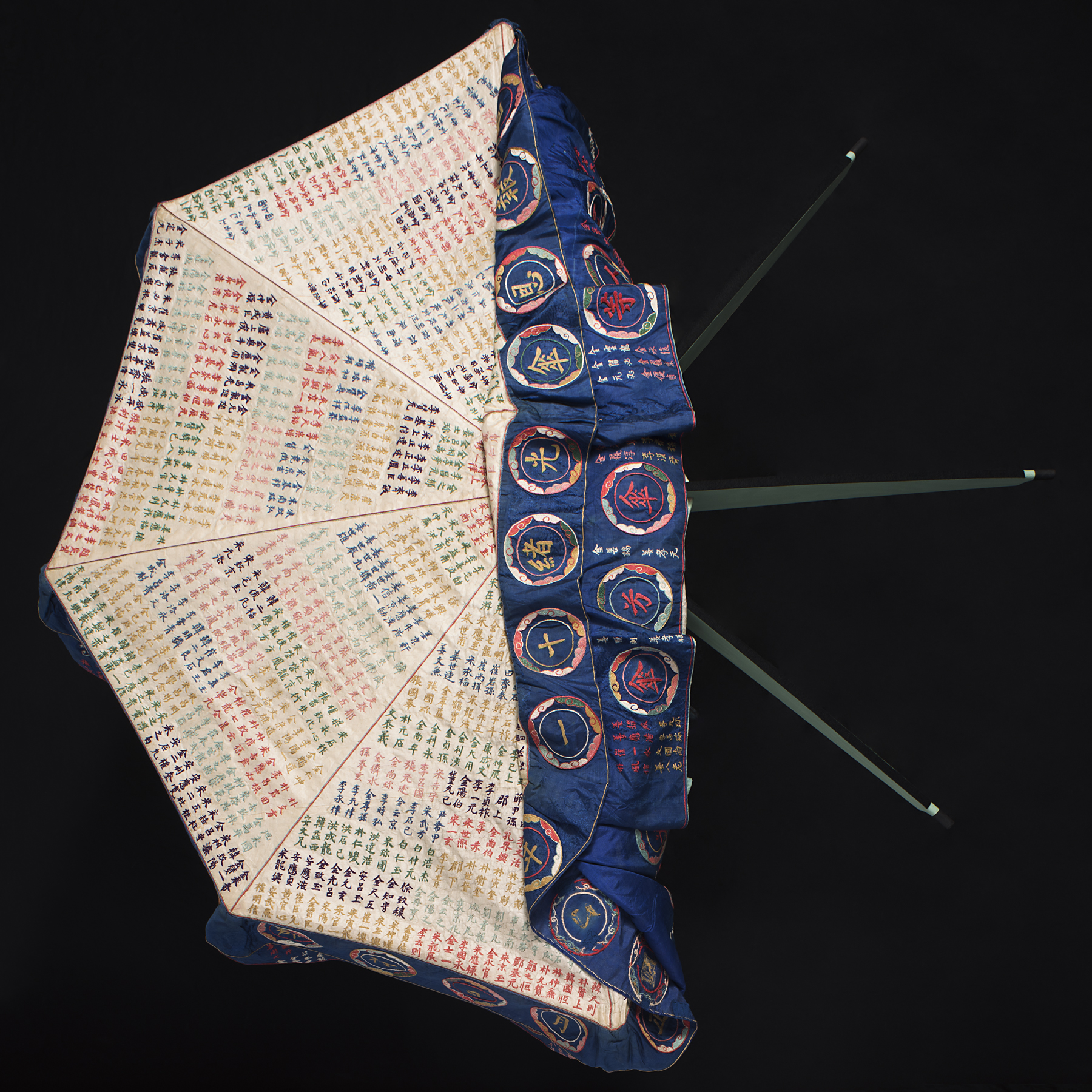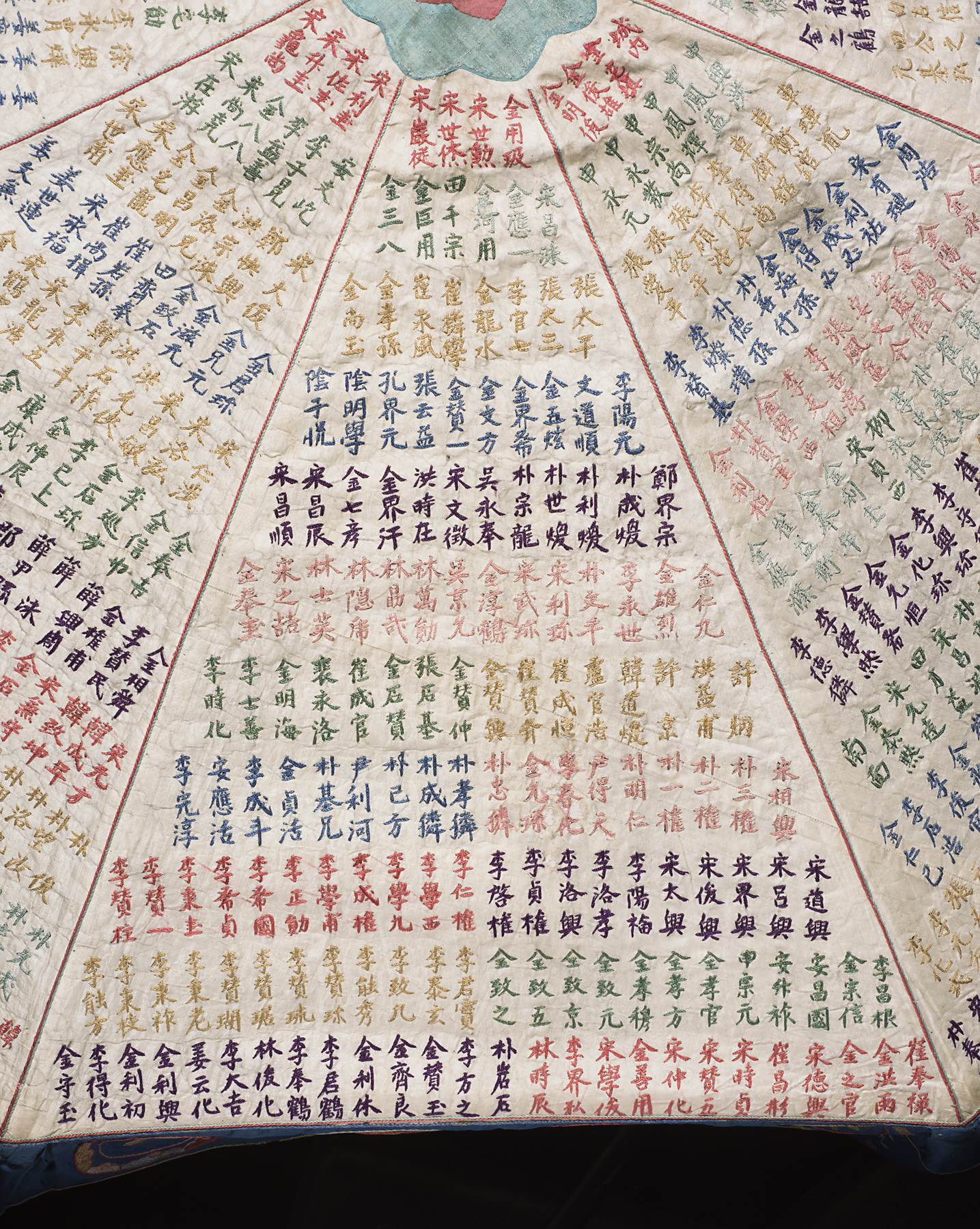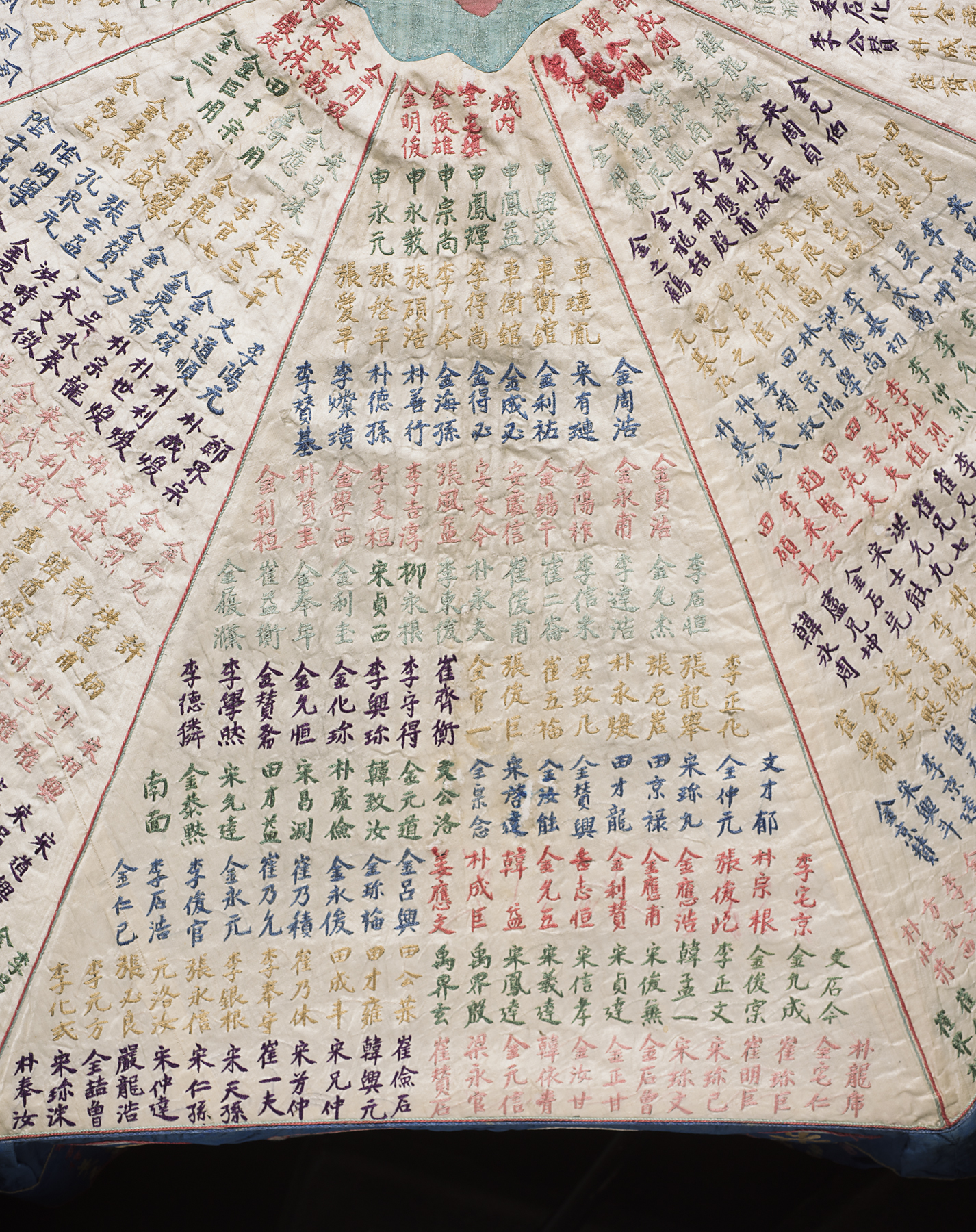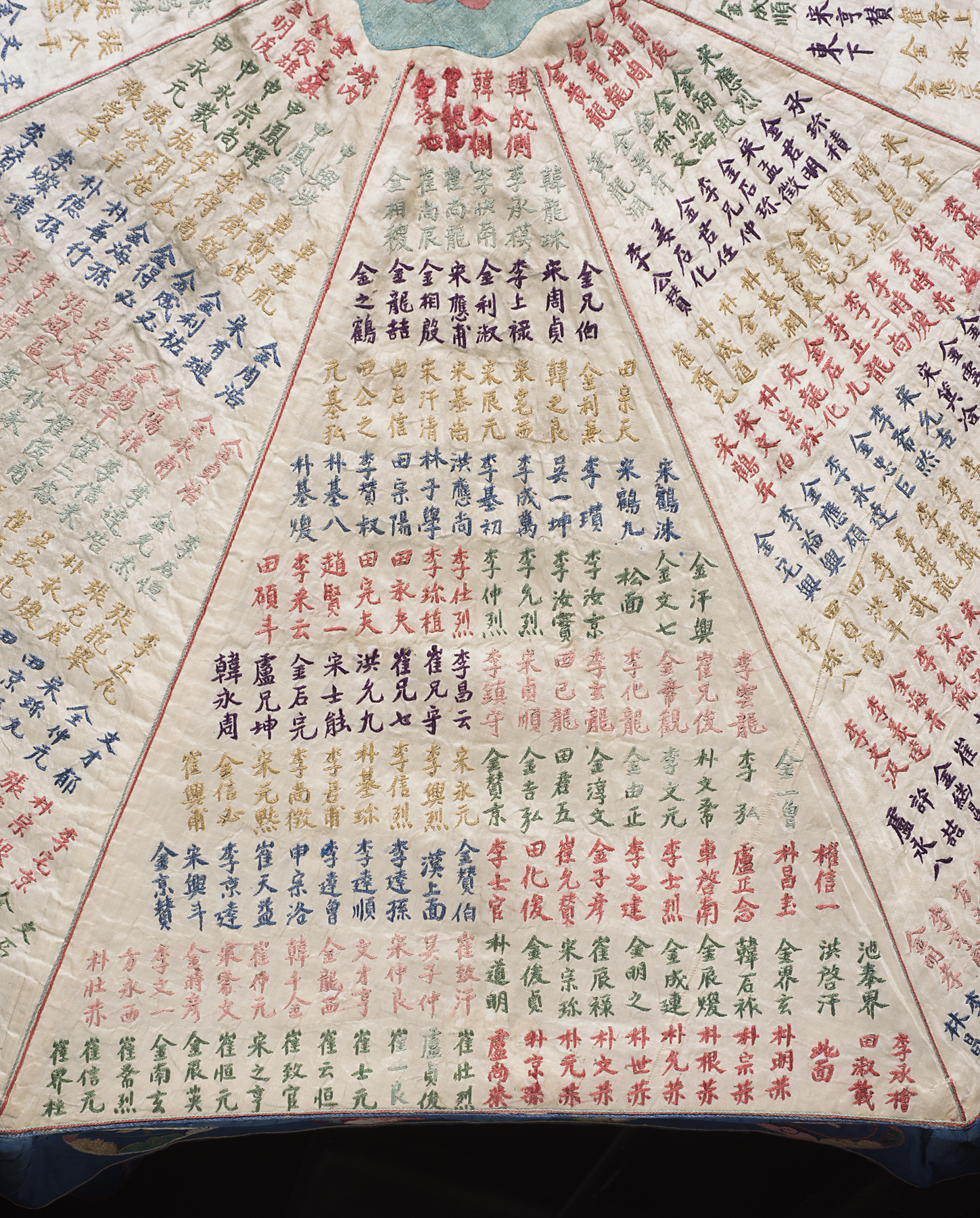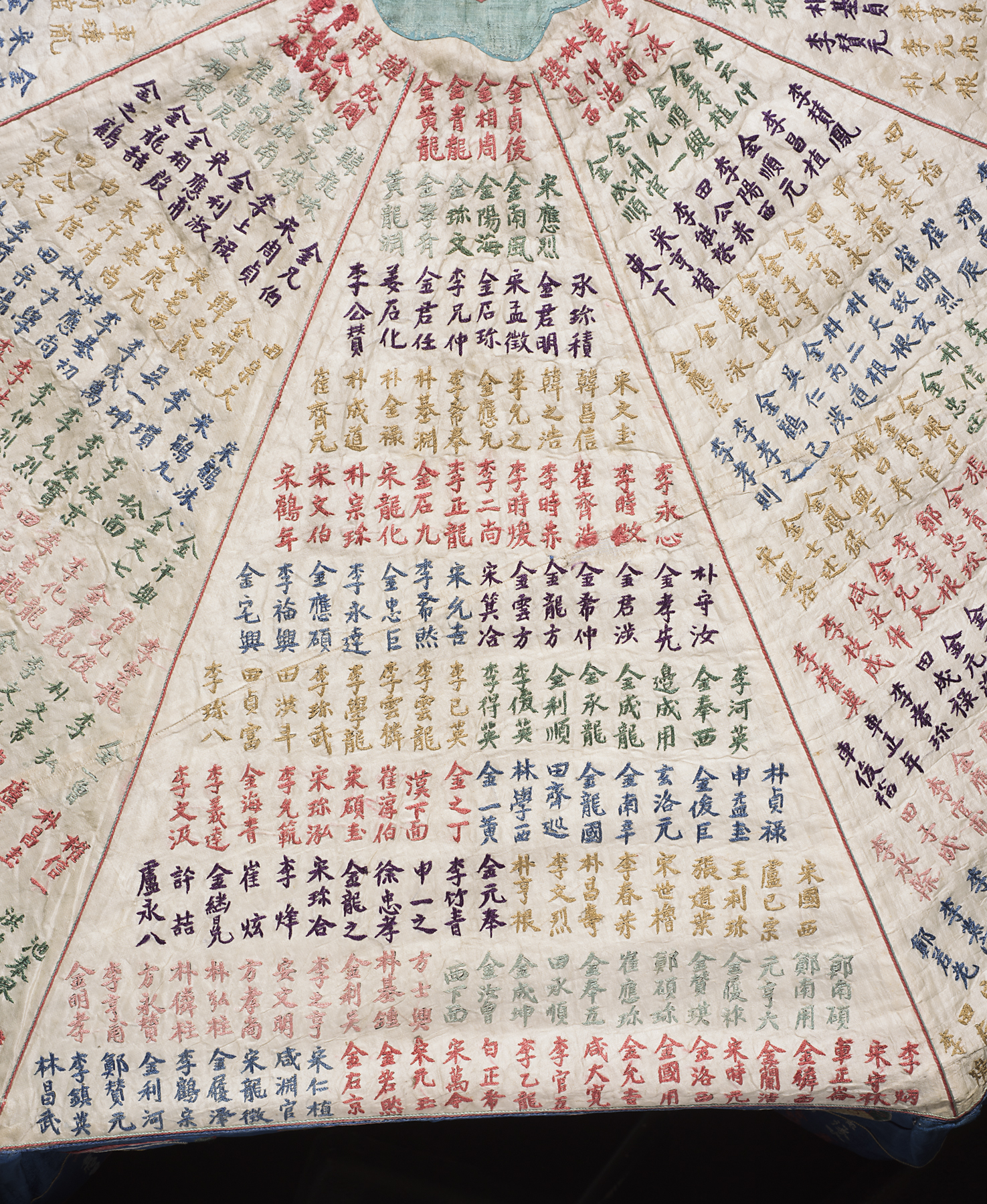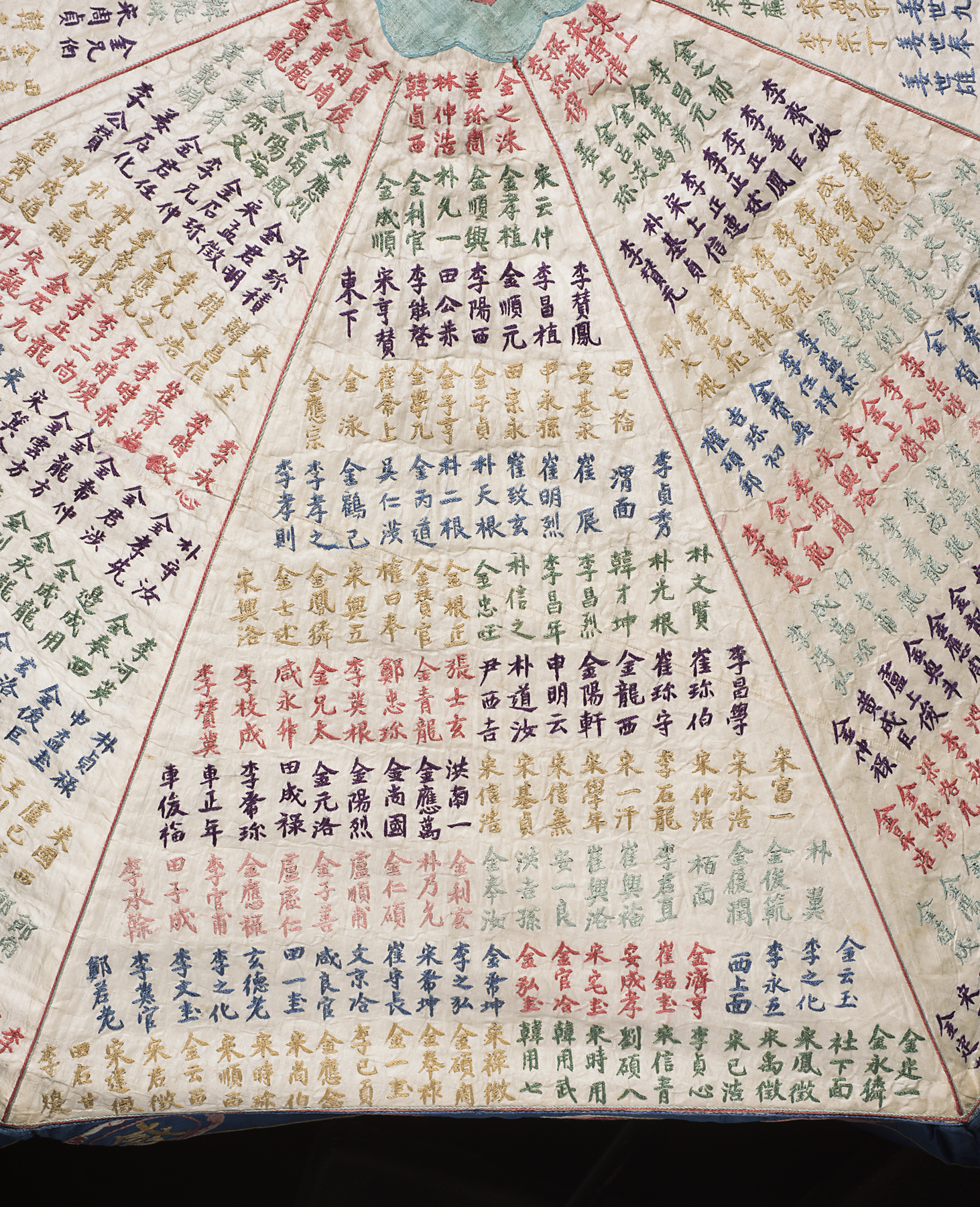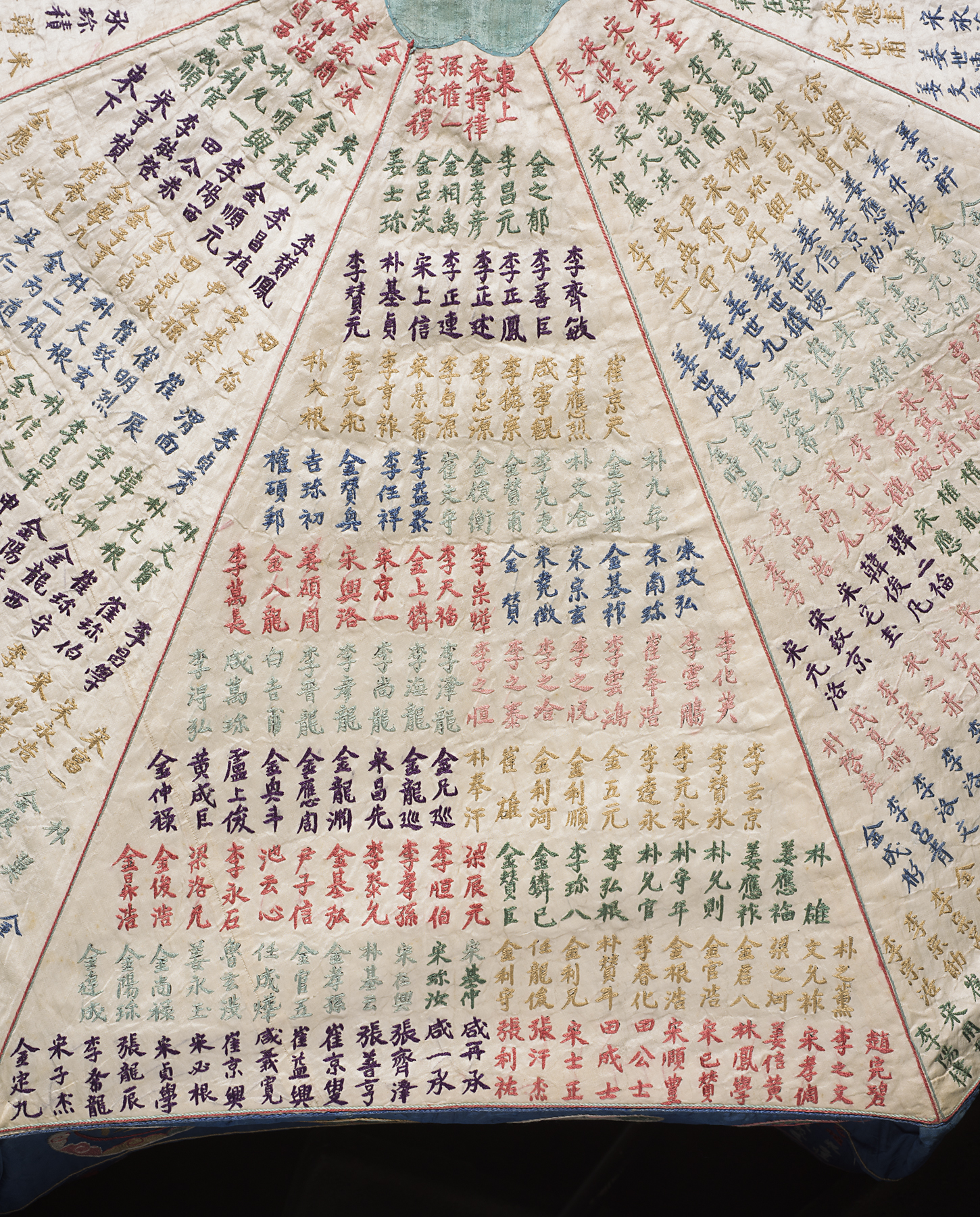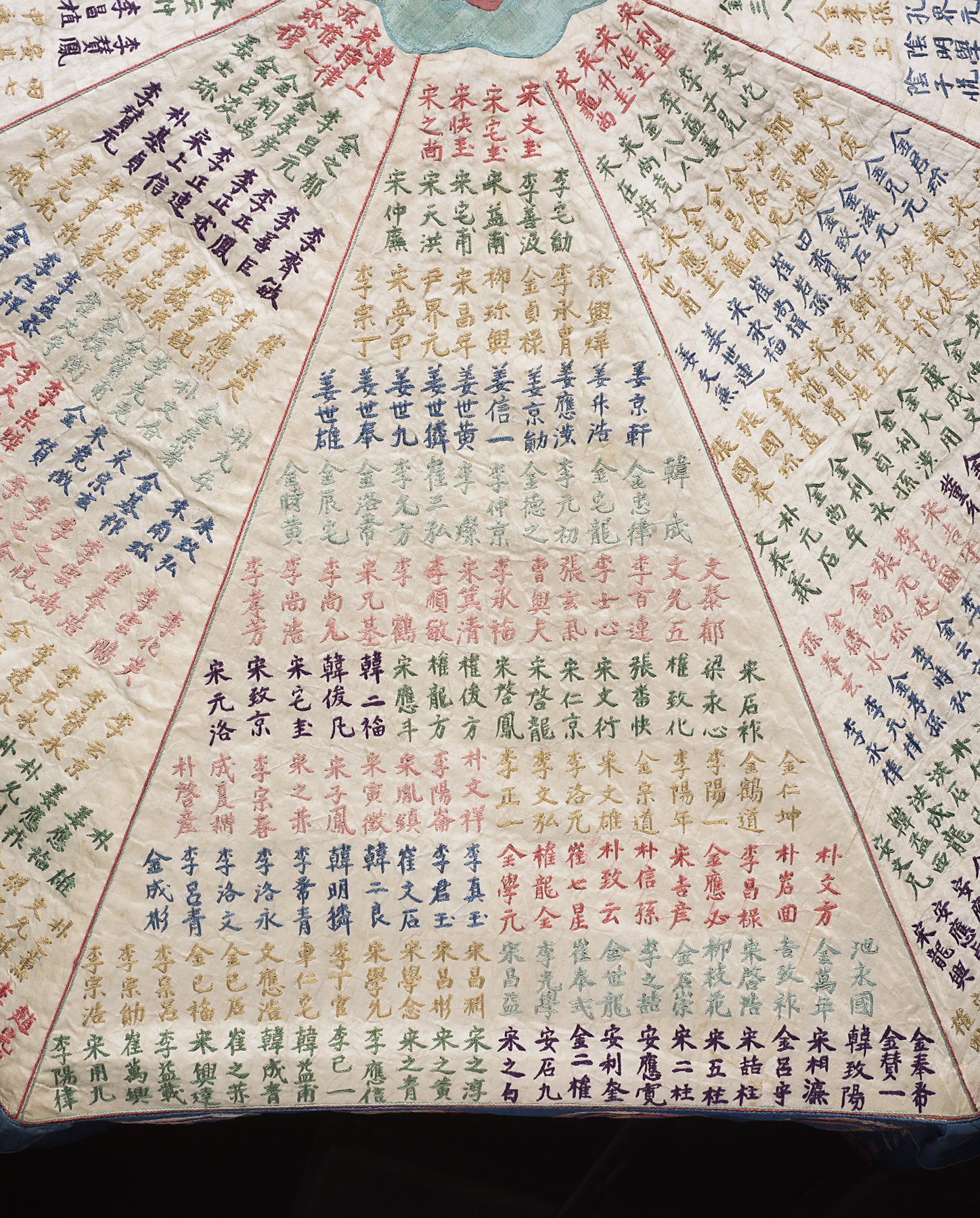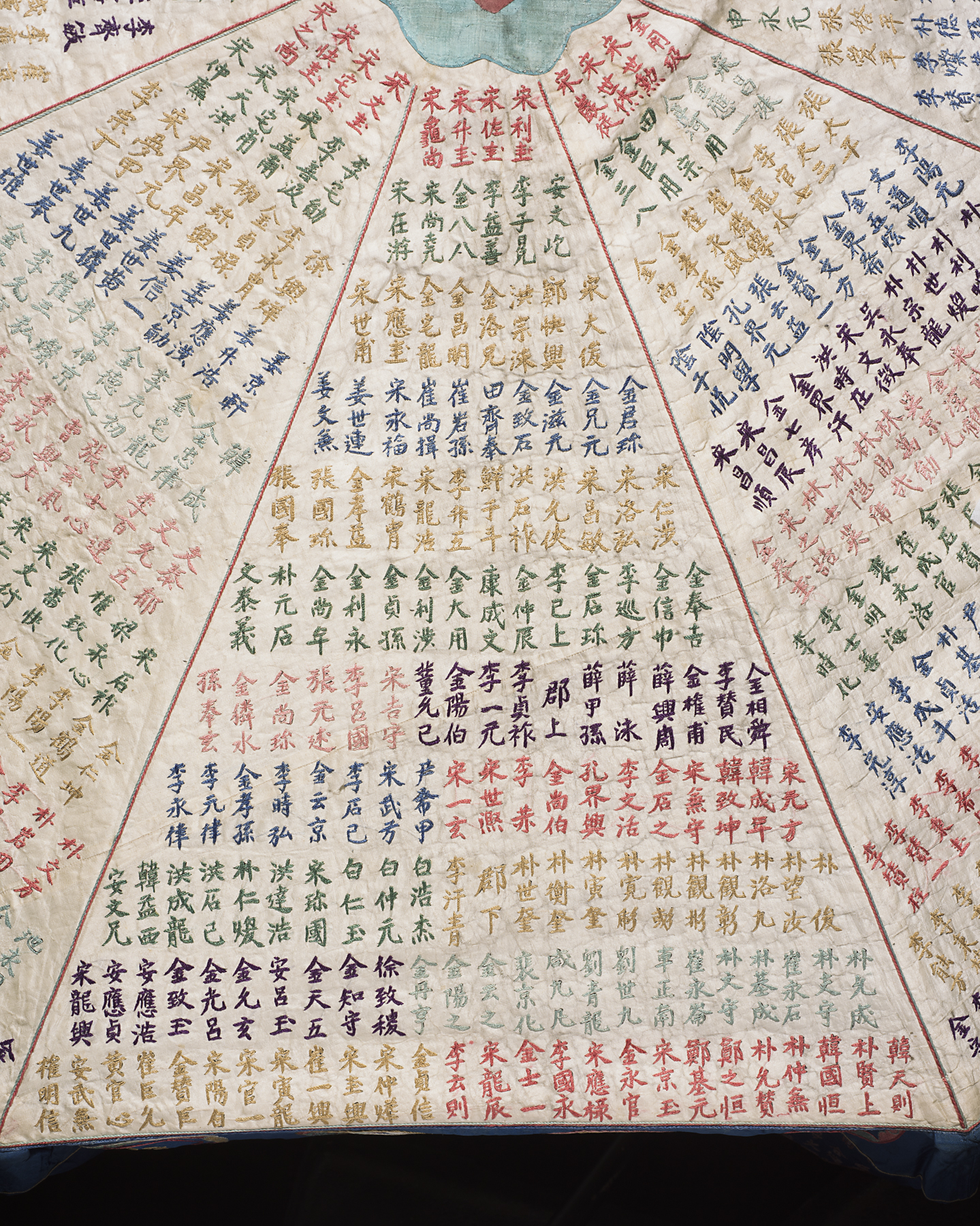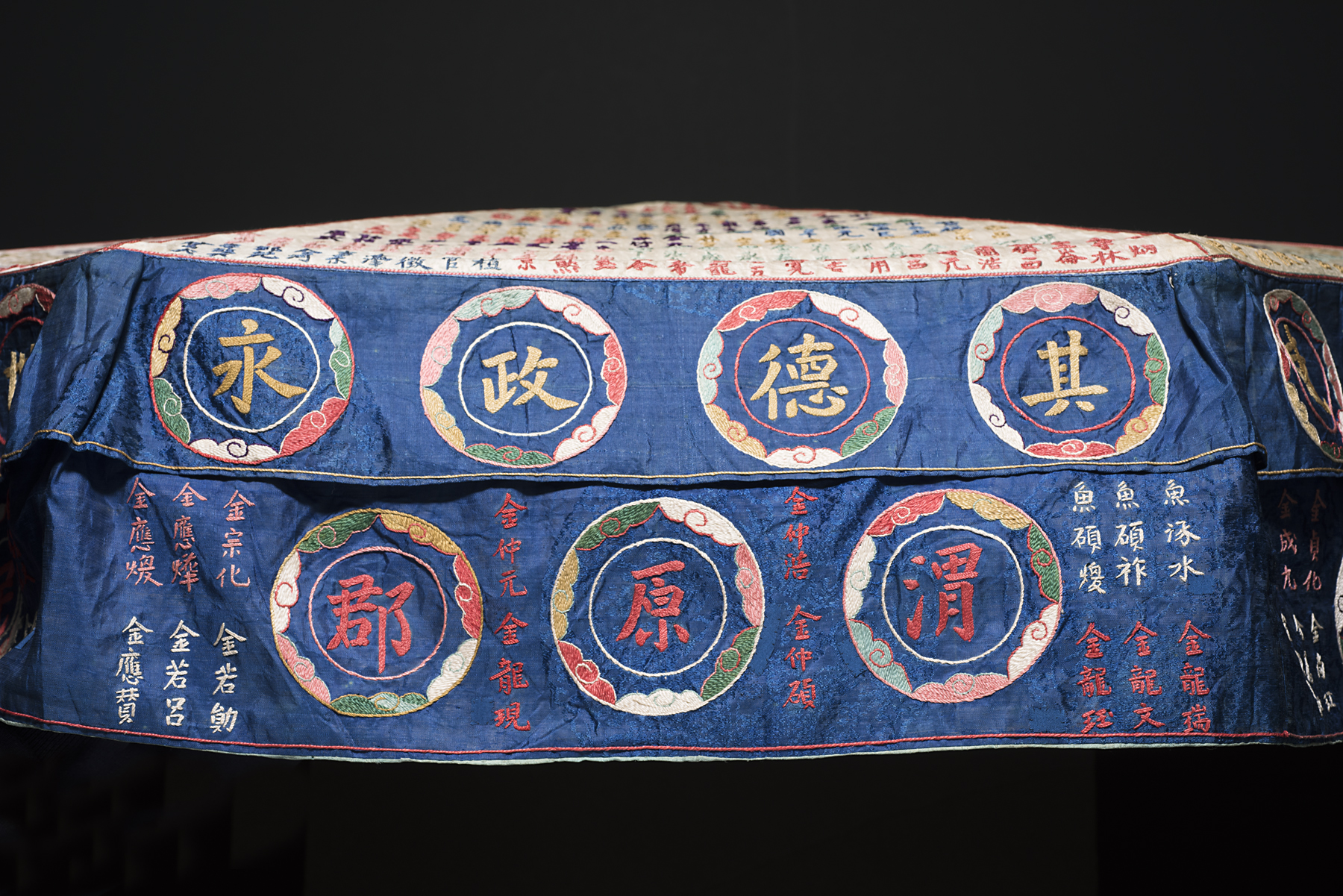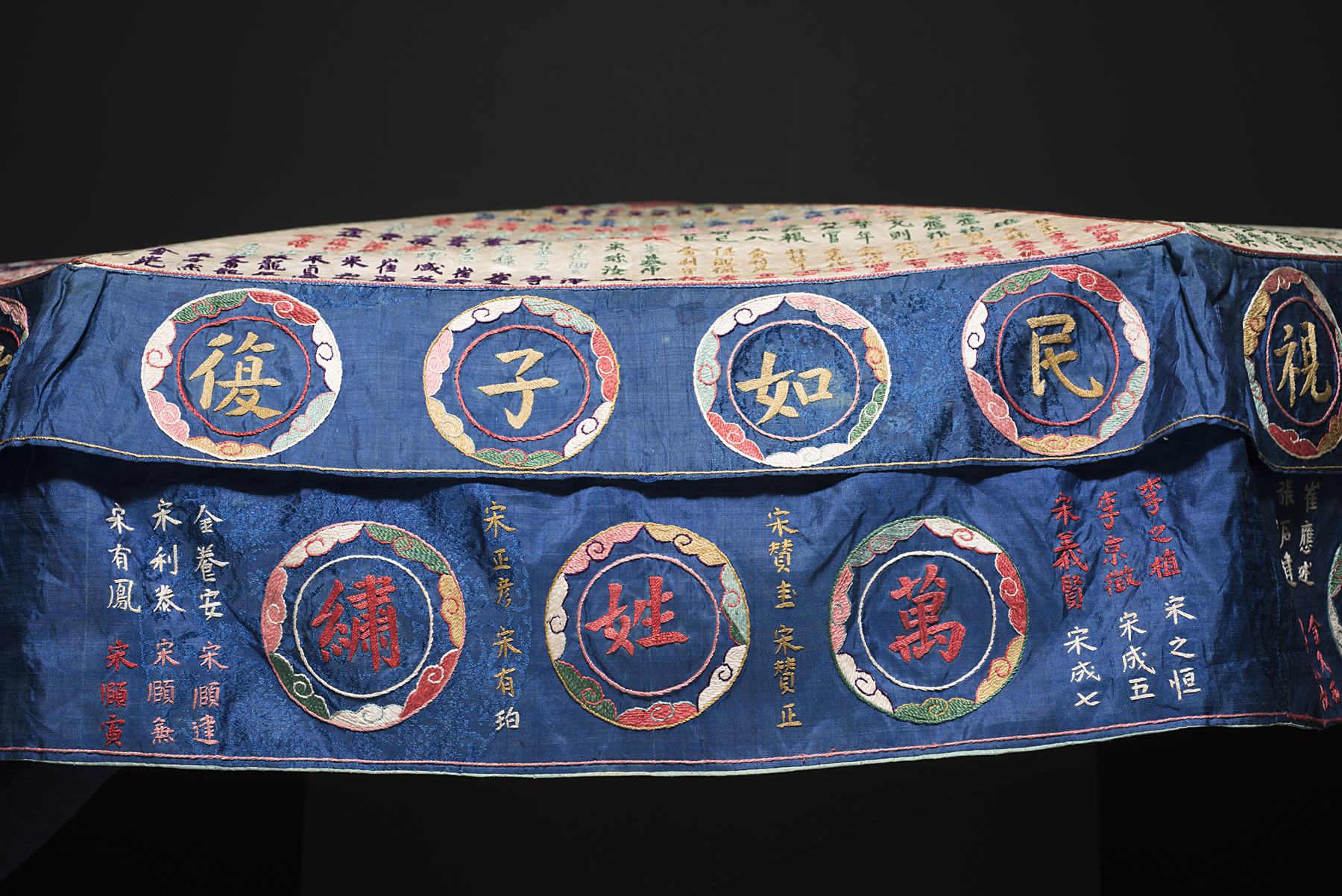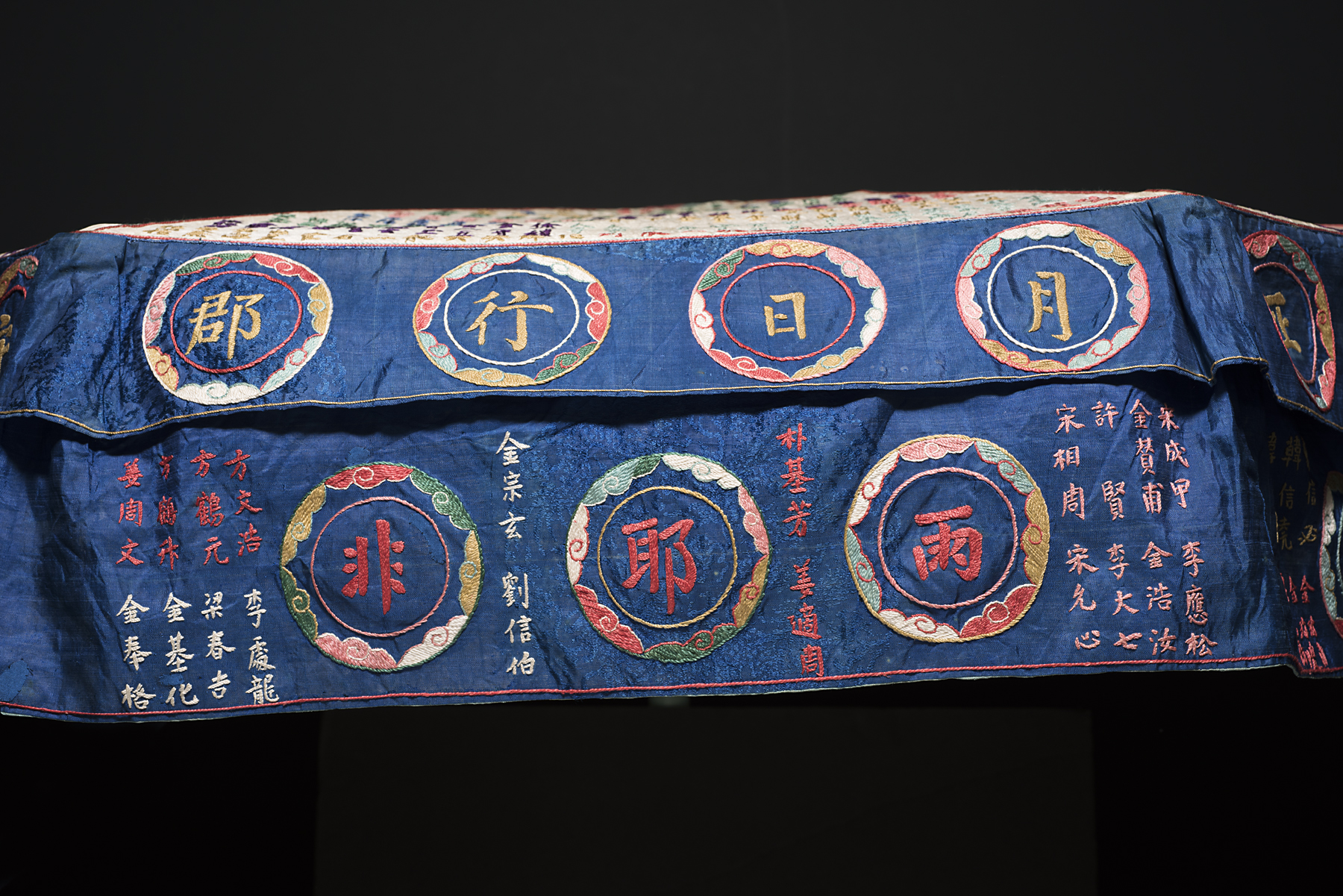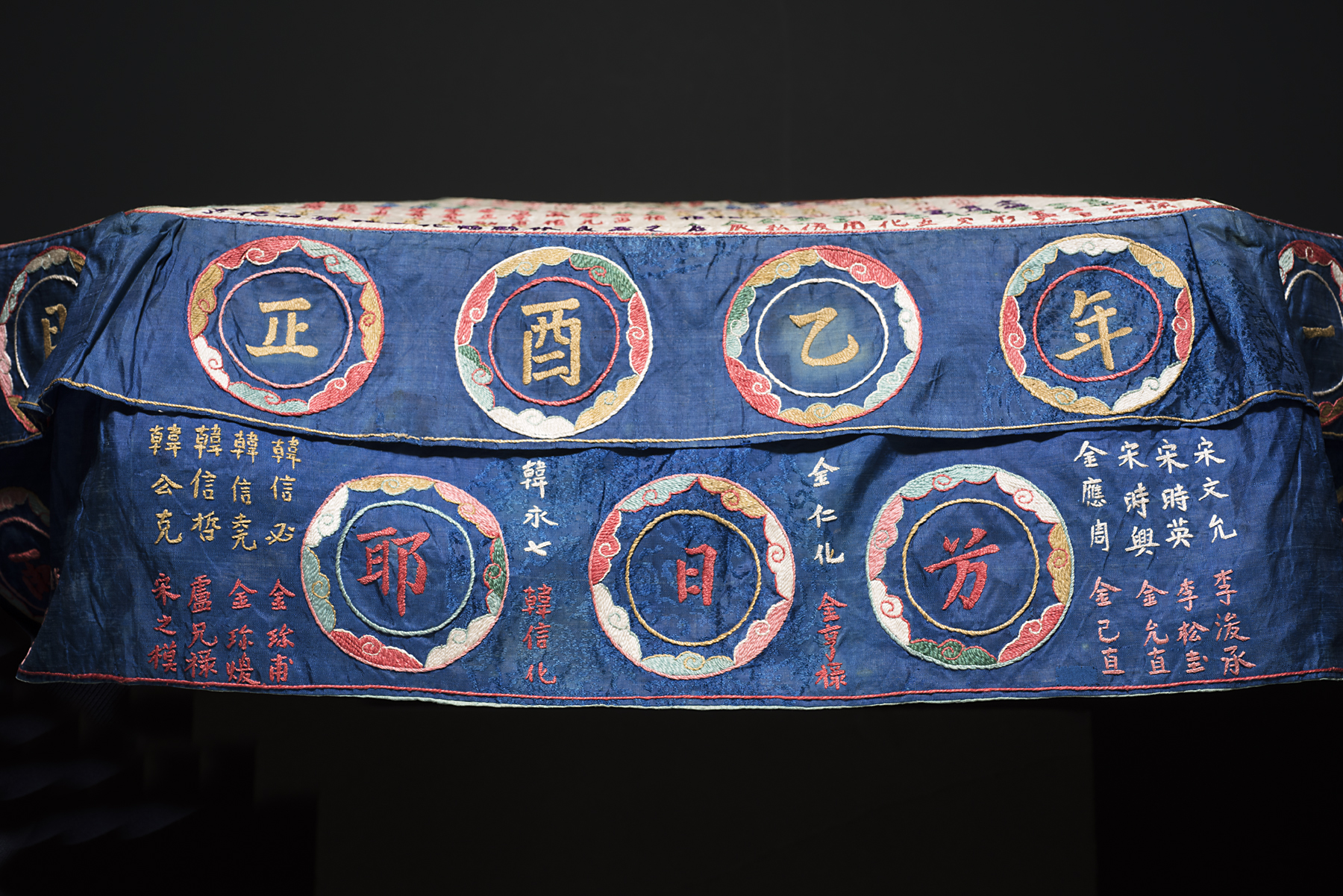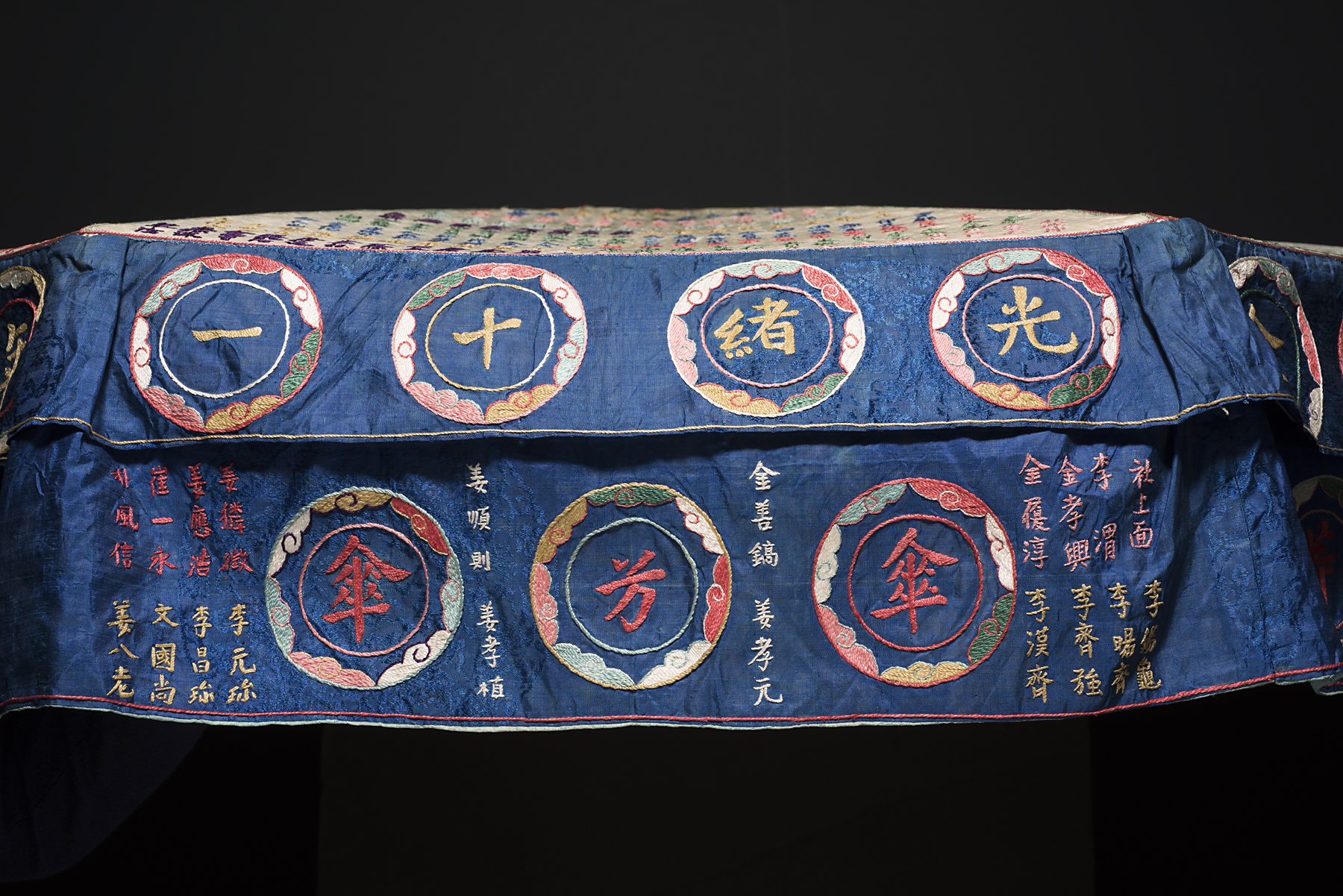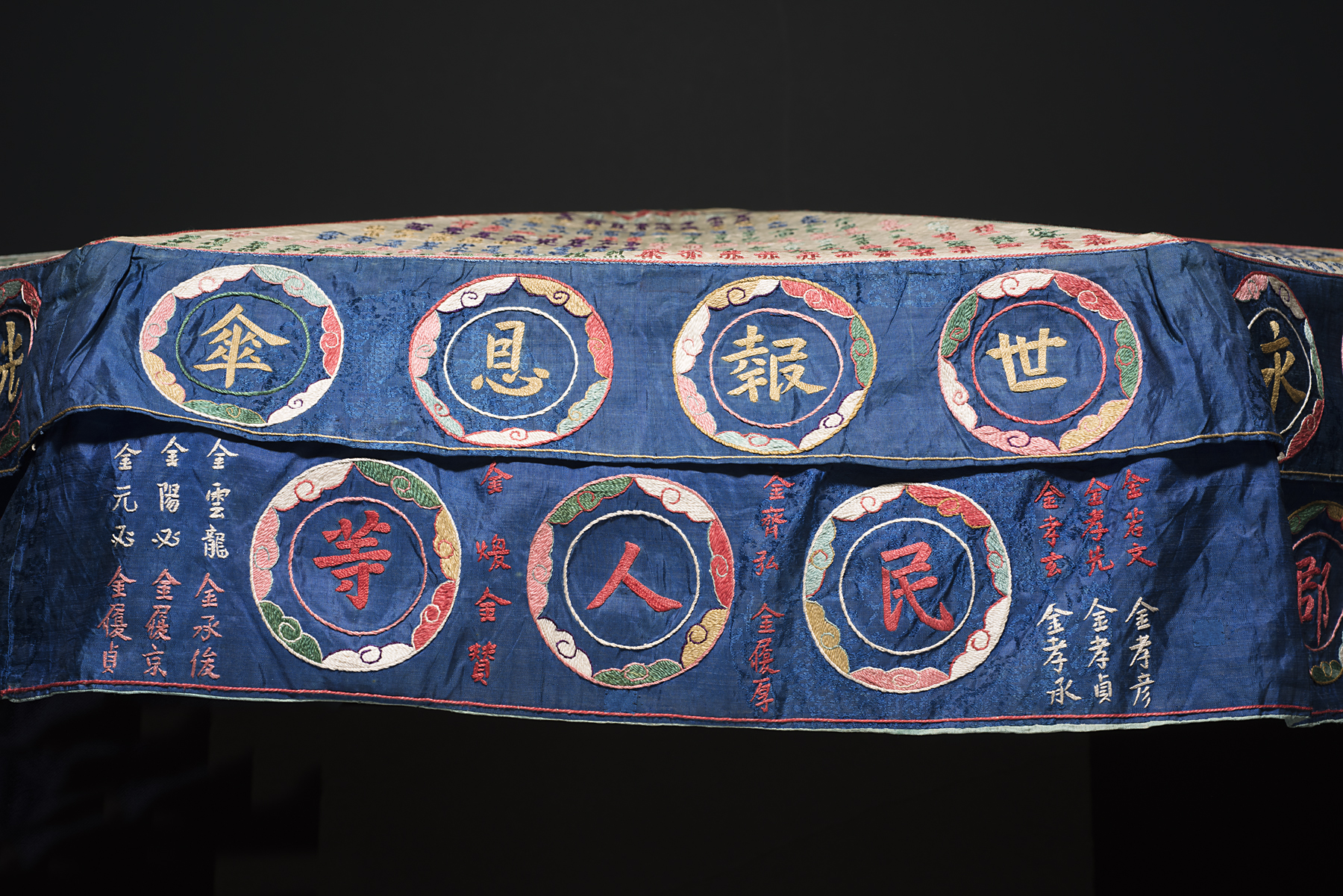Ten Thousand Men’s Canopy, unknown maker from Korea
Artwork Overview
Ten Thousand Men’s Canopy
, Guangxu 11 (1885)
Where object was made: Korea
Material/technique: silk; satin stitch; embroidering
Dimensions:
Object Diameter (Diameter): 197 cm
Object Diameter (Diameter): 77 1/2 in
Object Diameter (Diameter): 197 cm
Object Diameter (Diameter): 77 1/2 in
Credit line: William Bridges Thayer Memorial
Accession number: 0000.1026
Not on display
If you wish to reproduce this image, please submit an image request

